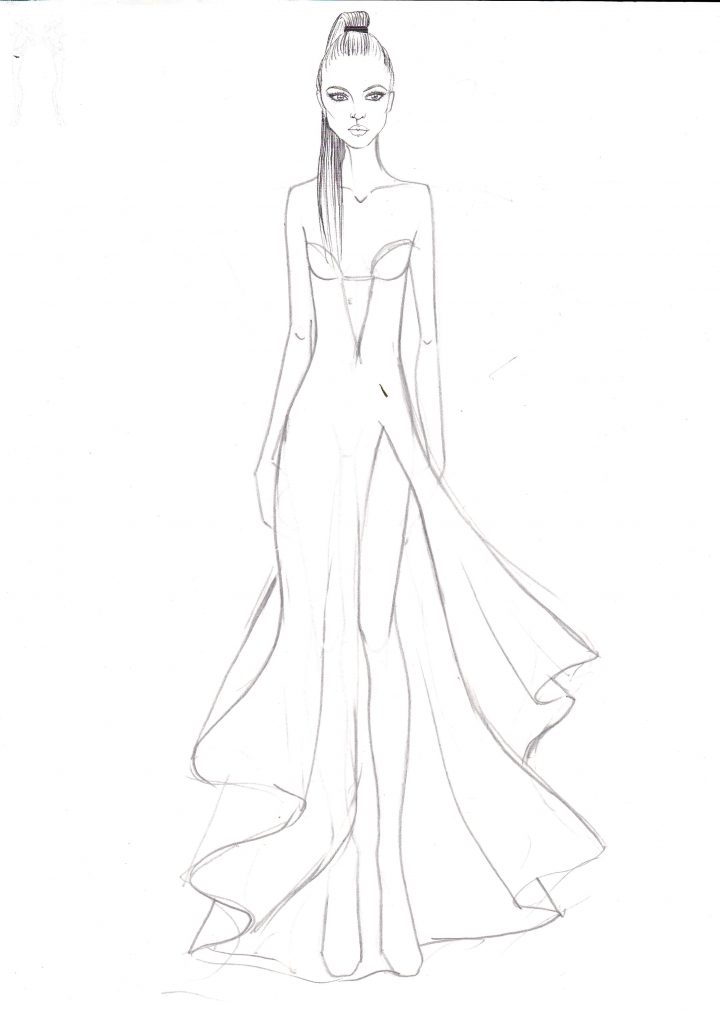

As women were called into factories and offices, fashionable dress simplified and shortened. Though many trends had their roots in fashions of the previous decade, the First World War cemented the move towards more practical, less restrictive clothing. The 1910s were a period of dramatic change in fashion.


During their life time Poiret and Paquin remained fierce competitors. The new high-waisted and shorter-skirted designs introduced by Paul Poiret were a main cause for this change. This design if compared to earlier ones by Paquin, seems to show a straighter and slimmer silhouette which was becoming increasingly fashionable towards the end of the decade. This design was created for the Summer collection 1908. The bottle green design is enhanced by the elaborate lace work adorning the cuffs and shoulder area of the dress. This could refer to the name of the dress, model or have some relation to a particular customer.

There is a pencil inscription 'Reginella' on the right hand side of the model. The V&A has a magnificent collection of Paquin sketch books, ranging from 1897 to 1956. Paquin bought the House of Worth in 1953 but closed its doors on 1 July 1956. She was the first woman in her field to be awarded the Légion d'Honneur in 1913.Īt Jeanne Paquin's death in 1936, the house passed into the hands of the Spanish couturier Antonio Canovas del Castillo. One of her greatest achievements was the opening of foreign branches in Buenos Aires, Madrid and London - she was the first Parisian couturier to take this step and many followed her lead. The originality and opulence of Paquin's designs soon bolstered the international reputation of the fashion house. In 1900 Jeanne Paquin was elected president of the Fashion Section for the Universal Exhibition and, throughout her career, many of her creations participated to those international fairs. In an age when fashion advertising was in still in its infancy, Jeanne Paquin was the first couturier to send mannequins to the trend-setting and trend-spotting races at Longchamp and Chantilly. The innovative yet subtle use of furs became one of the house's trademarks. Paquin soon became famous for introducing coloured lining to otherwise mournful looking black coats, and for adding embellishments of lace or rich embroidery to black dresses. In 1890 Jeanne Paquin (1869 - 1936) and her husband Isidore Paquin opened their Maison de Couture Rue de la Paix in Paris, close to the celebrated House of Worth. 'Originality and Opulence': the House of Paquin These innovations, a significant liberation for women, were accompanied by the introduction of strong and vibrant colours. However, as the century unfolded, the concept of the 'natural figure' banished the corseted and exaggerated S-shaped figure that was fashionable at the beginning of the decade. E.1432-1957 1900sįor most of the first decade of the 20th century, fashion mainly showed seasonal modifications rather than any fundamental changes.


 0 kommentar(er)
0 kommentar(er)
